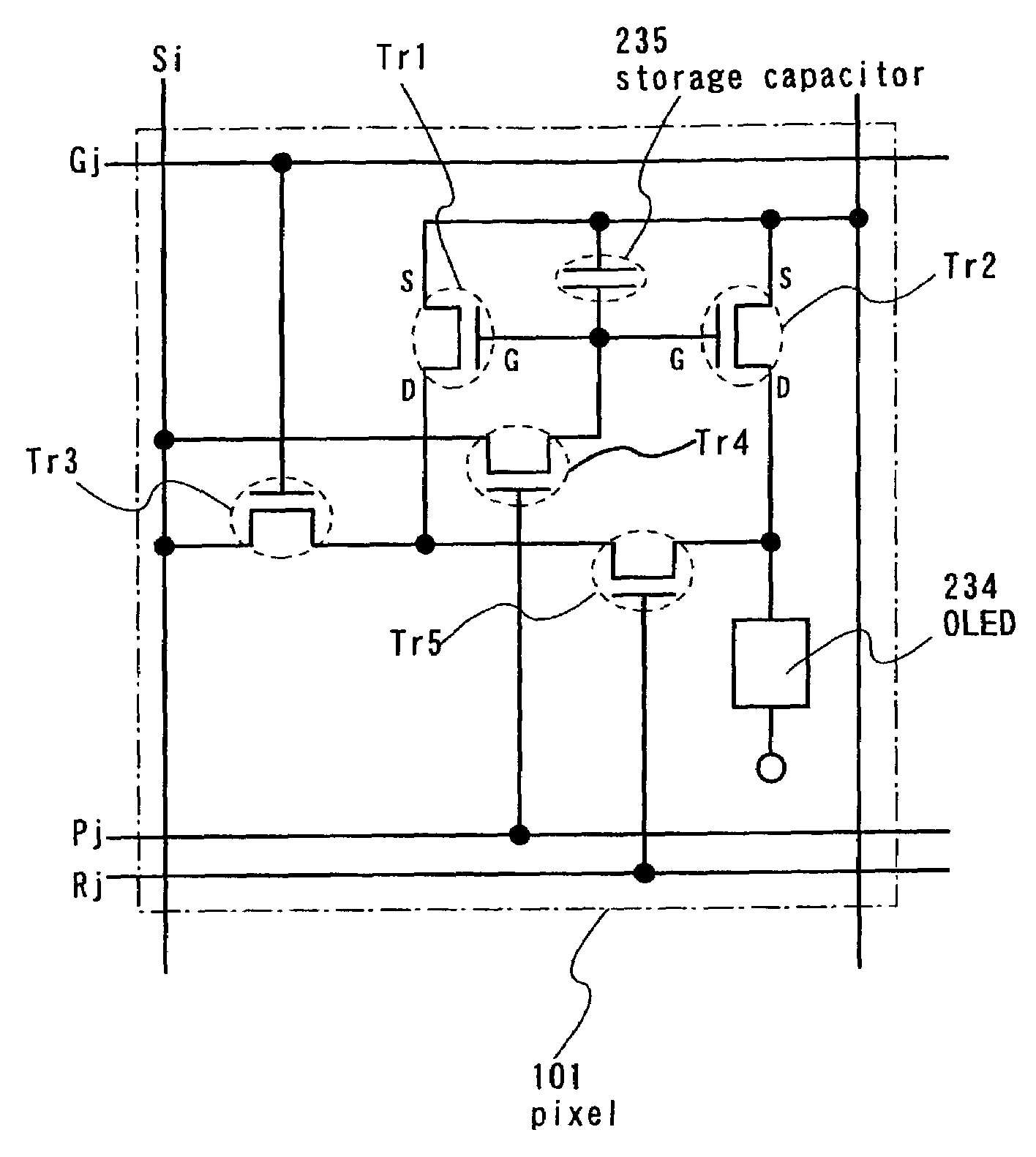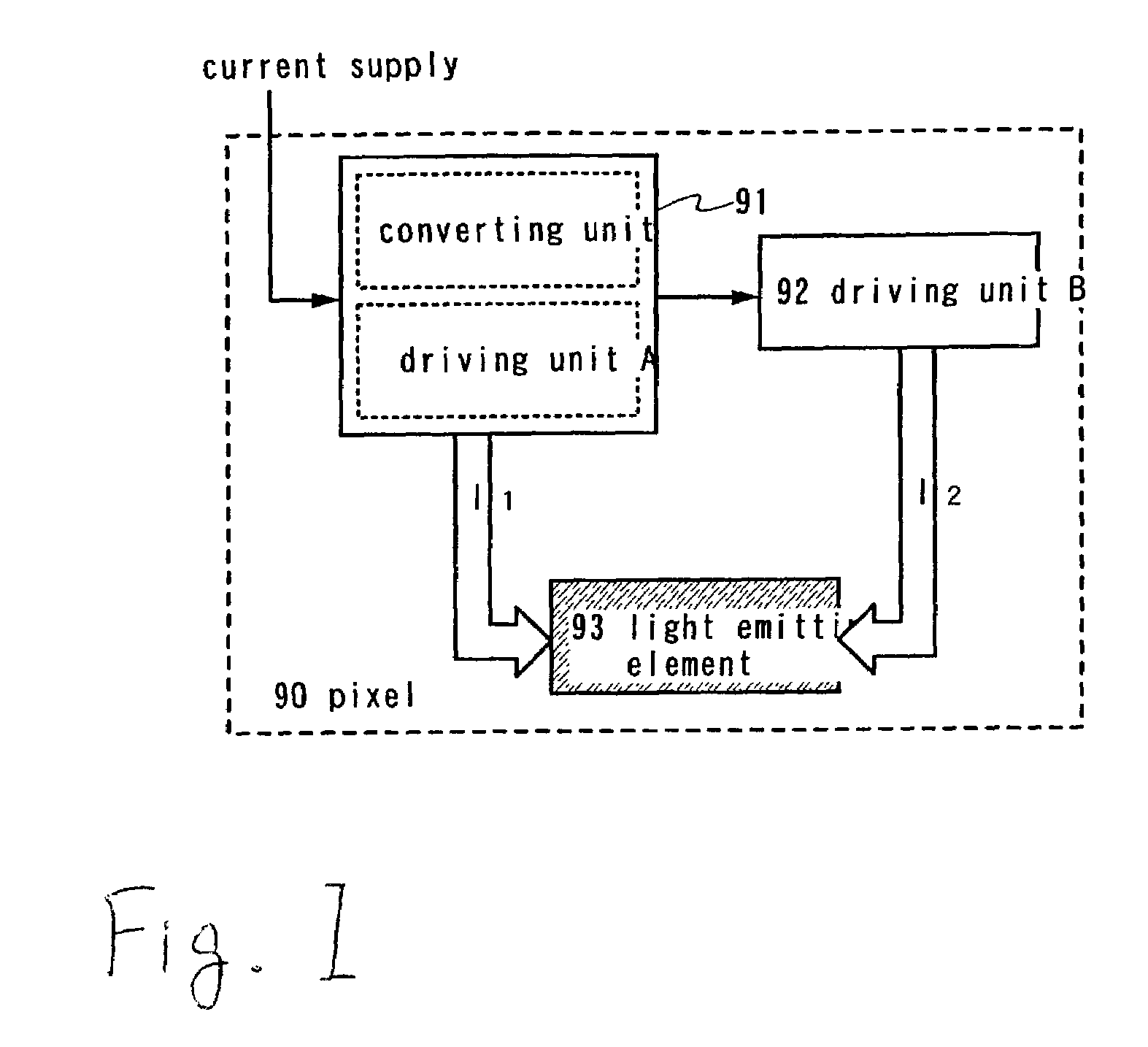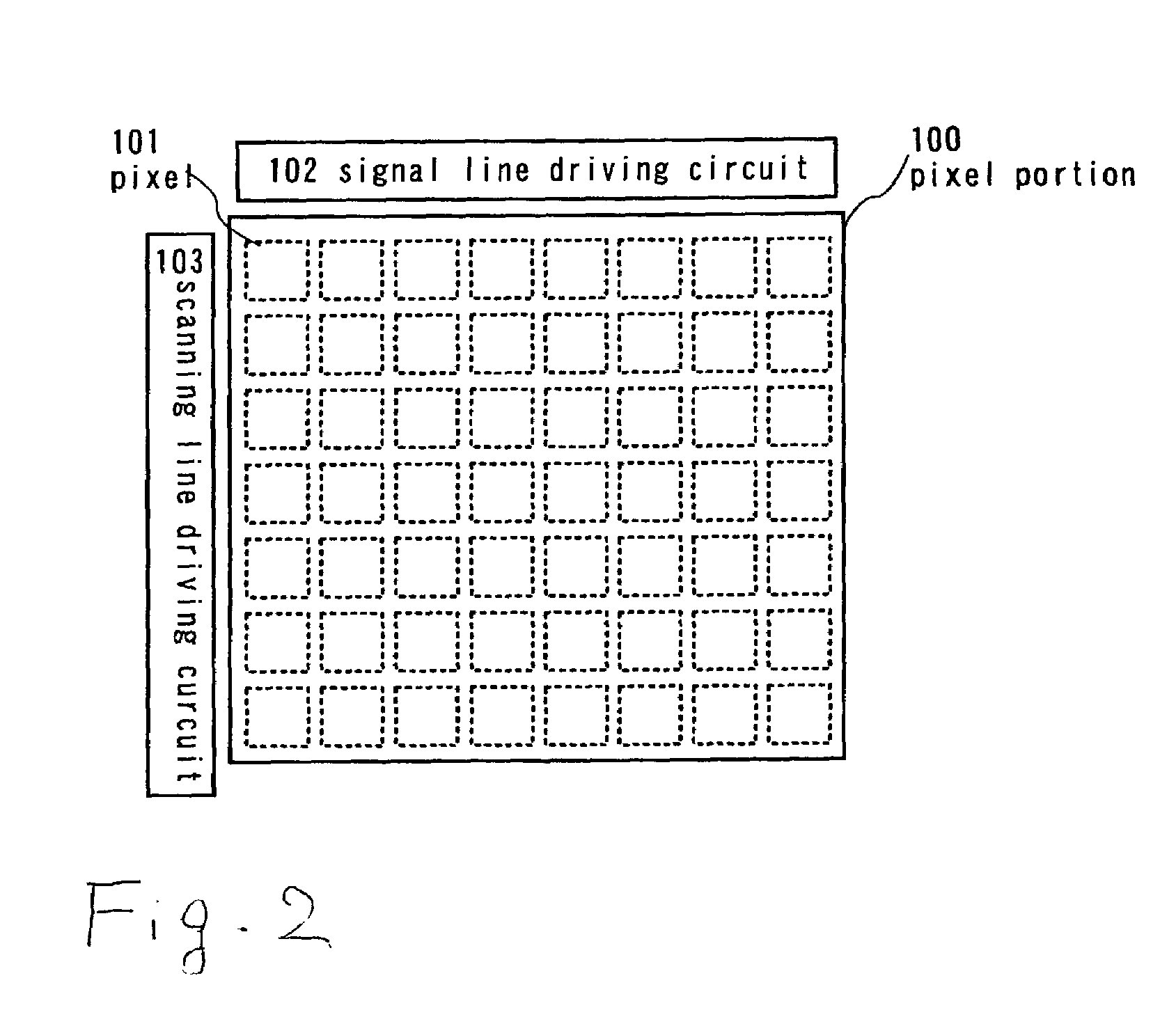Light emitting device, method of driving a light emitting device, element substrate, and electronic equipment
- Summary
- Abstract
- Description
- Claims
- Application Information
AI Technical Summary
Benefits of technology
Problems solved by technology
Method used
Image
Examples
embodiment mode 1
[0091]FIG. 2 is a block diagram showing the structure of a light emitting panel of the present invention. Denoted by 100 is a pixel portion in which a plurality of pixels form a matrix pattern. Each pixel is denoted by 101. 102 denotes a signal line driving circuit and 103 denotes a scanning line driving circuit.
[0092]In FIG. 2, the signal line driving circuit 102 and the scanning line driving circuit 103 are formed on the same substrate where the pixel portion 100 is formed. However, the present invention is not limited thereto. The signal line driving circuit 102 and the scanning line driving circuit 103 may be formed on a substrate different from the one on which the pixel portion 100 is formed, and may be connected to the pixel portion 100 through a connector such as an FPC. The device in FIG. 2 has one signal line driving circuit 102 and one scanning line driving circuit 103. However, the present invention is not limited thereto and the number of signal line driving circuit 102...
embodiment mode 2
[0131]Shown in FIG. 3 is one structure of the pixel 101 of the light emitting device of FIG. 2. This embodiment mode gives a description on another structure of this pixel 101.
[0132]FIG. 6 shows a detailed structure of the pixel 101 in FIG. 2. The pixel 101 shown in FIG. 6 has a signal line Si (one of S1 to Sx), a first scanning line Gj (one of G1 to Gy), a second scanning line Pj (one of P1 to Py), a third scanning line Rj (one of R1 to Ry), and a power supply line Vi (one of V1 to Vx).
[0133]The pixel 101 also has a transistor Tr1, a transistor Tr2, a transistor Tr3, a transistor Tr4, a transistor Tr5, a transistor Tr6, a light emitting element 214, and a storage capacitor 215. The storage capacitor 215 is provided to hold the gate voltage of the transistors Tr1 and Tr2 more securely, but it is not always necessary.
[0134]A gate of the transistor Tr3 is connected to the first scanning line Gj. The transistor Tr3 has a source and a drain one of which is connected to the signal line S...
embodiment mode 3
[0169]Shown in FIGS. 3 and 6 are structures of the pixel 101 of the light emitting device of FIG. 2. This embodiment mode gives a description on still another structure of this pixel 101. This embodiment mode is obtained by changing the positions of Tr5 and Tr6 in FIG. 6. Alternatively, only one of Tr5 and Tr6 may change its position.
[0170]FIG. 8 shows a detailed structure of the pixel 101 shown in FIG. 2. The pixel 101 shown in FIG. 8 has a signal line Si (one of S1 to Sx), a first scanning line Gj (one of G1 to Gy), a second scanning line Pj (one of P1 to Py), a third scanning line Rj (one of R1 to Ry), and a power supply line Vi (one of V1 to Vx).
[0171]The pixel 101 also has a transistor Tr1, a transistor Tr2, a transistor Tr3, a transistor Tr4, a transistor Tr5, a transistor Tr6, a light emitting element 224, and a storage capacitor 225. The storage capacitor 225 is provided to hold the gate voltage of the transistors Tr1 and Tr2 more securely, but it is not always necessary.
[01...
PUM
 Login to View More
Login to View More Abstract
Description
Claims
Application Information
 Login to View More
Login to View More - R&D
- Intellectual Property
- Life Sciences
- Materials
- Tech Scout
- Unparalleled Data Quality
- Higher Quality Content
- 60% Fewer Hallucinations
Browse by: Latest US Patents, China's latest patents, Technical Efficacy Thesaurus, Application Domain, Technology Topic, Popular Technical Reports.
© 2025 PatSnap. All rights reserved.Legal|Privacy policy|Modern Slavery Act Transparency Statement|Sitemap|About US| Contact US: help@patsnap.com



